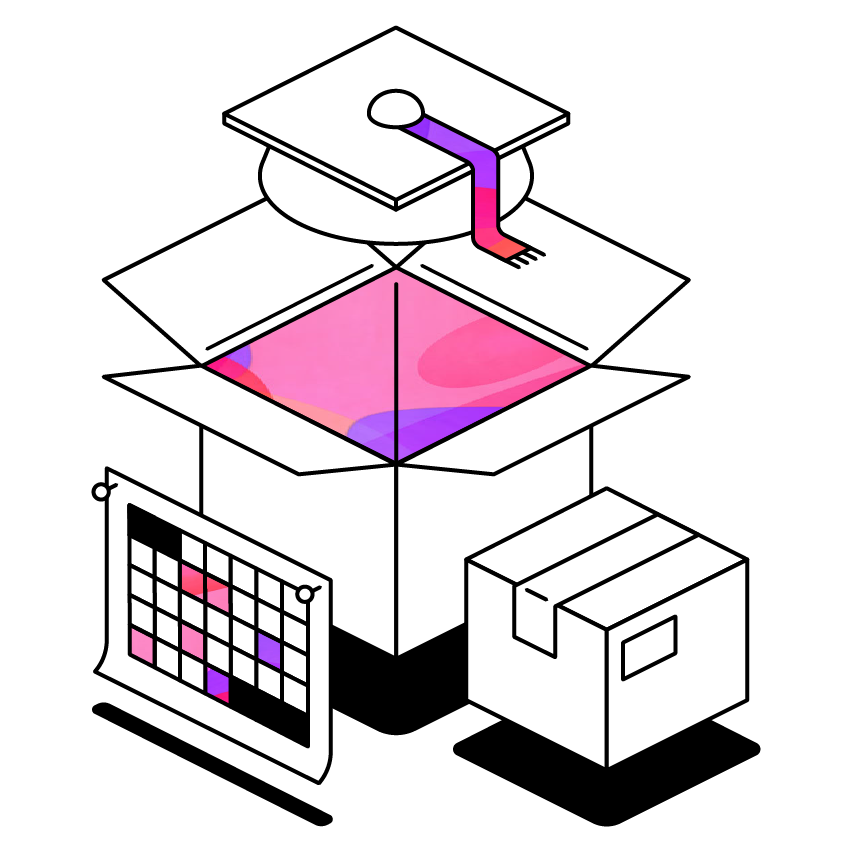The evolution of student success
The landscape of higher education is rapidly changing and student success strategies must adapt accordingly. We sat down with three student success expert practitioners to delve into the current challenges and opportunities faced by them and their higher education institutions.
 3 min read
3 min read
 Published: 18 Sep 2024
Published: 18 Sep 2024
 Jacob Goodwin
Jacob Goodwin


The landscape of student success is evolving. As college demographics continue to shift, institutions need to adapt their student success strategies accordingly.
To gain an insight into how professionals are shifting gears to meet the needs of their student populations, we recently sat down with April Belback, Associate Vice Provost for Student Success and Advising at the University of Pittsburgh, Tammy Wyatt, Senior Vice Provost for Student Success, and Amy Buechler-Steubing, Associate Vice Provost for Strategic Initiatives and Learning Innovation, from the University of Texas at San Antonio (UTSA).
They discussed the shift from traditional metrics to a more holistic approach, the unique challenges faced by the "new majority learner," and the innovative initiatives their institutions are implementing to support student thriving.
Missed the webinar? Fear not, below you’ll find the key takeaways…
Why are student success looking beyond graduation rates?
This is all part of a transition in end goals; from a student surviving in education, to a student thriving throughout their experience.
The traditional focus on student success metrics such as retention and graduation rates is undergoing a significant transformation. Institutions are recognizing that true student success encompasses more than just academic achievements.
As Amy Buechler-Steubing shared, "we also recognize that student success goes beyond academic performance and other historical metrics. Now we’re prioritizing the overall well-being of our students and looking to address their mental, emotional, and social health alongside their academic growth.”
This holistic approach acknowledges the multifaceted nature of student well-being and aims to create an environment where students not only survive but truly thrive.
April Belback further emphasized this shift, stating, "in the past, we were more focused on outcomes that were defined by administrators. Now we're really focused on an asset-based and equity-focused lens. We talk to our students and instead of prescribing, ask what do students need?"
Supporting the needs of the new majority learner
The “new majority learner” represents the diverse and often non-traditional students who now comprise the majority in higher education.
These students come from various backgrounds and face a range of challenges that can impact their academic journey.
Tammy Wyatt highlighted the demographics of this population at her institution explaining how just under 50% of their students are Pell eligible, just under 50% are first gen, 70% are underrepresented minorities, and over 80% of students work at least part time.
In addition to financial constraints, these students may also encounter innate barriers such as disabilities, mental health issues, or language difficulties. The demands of work, family, or other responsibilities can further limit their time and attention for studies.
Recognizing and addressing these diverse needs is crucial for creating an inclusive and supportive learning environment where all students have the opportunity to succeed.
Innovative initiatives driving student success
Institutions are taking proactive steps to support the "new majority learner" through innovative initiatives that address their unique needs.
The University of Pittsburgh’s Student Success Hub serves as a resource center where students can access a wide range of support services, connect with peers, and engage with faculty and staff.
As April Belback explains, "at the heart of it, our Student Success Hub exists as a space for students to collaborate with each other and university resources."
UTSA's First-Gen Scholars program exemplifies another impactful initiative, providing financial assistance, mentoring, and career readiness training to first-generation students.
The program has demonstrated promising results, with "data showing that the students are persisting at higher levels, are graduating at higher levels, and are able to express satisfaction with what they’ve learned around career readiness."
UTSA also places a strong emphasis on student employment, recognizing its positive impact on persistence rates. Amy Buechler-Steubing notes, “we found that to be true, that when students are engaged in employment opportunities on campus, they are persisting at higher rates.”
These programs demonstrate a commitment to fostering a sense of belonging and empowerment among students, enabling them to overcome challenges and achieve their academic goals.
Adapting to an evolving higher education landscape
Navigating the evolving landscape of higher education requires institutions to embrace a collaborative and data-driven approach.
As Tammy Wyatt emphasizes, “collaboration is the key. Starting cross department conversations breaks down silos and helps everyone move forward."
By working together across institutions, educators can share insights, develop innovative solutions, and ensure that student success remains at the forefront of their efforts.
The use of data and analytics plays a crucial role in understanding student needs and tailoring support services effectively. For example, at UTSA, institutional research provides "real-time data through dashboards" to inform decision-making and action plans.
As the needs of students continue to evolve, it is essential for institutions to remain adaptable and proactive in their approach to student success, ensuring that all learners have the opportunity to thrive.
More from Supporting Students
View All
 5 min read
5 min read
Understanding and supporting students with barriers in higher education
Take a deeper look into students with barriers to learner. Here, we discuss who they are, what challenges they face and what institutions can do to support them.

 3 min read
3 min read
Understanding and supporting time poor students in higher education
Here, we take a deeper dive into who the time poor learners are, and their unique challenges. Explore strategies to support students juggling multiple roles and responsibilities, to create a more inclusive and flexible learning environment.

 3 min read
3 min read
Navigating the AI landscape in education: Helping or hindering student success
AI has transformed what it means to teach and to learn. It is crucial now for higher education leaders to determine how they deploy AI to help, rather than hinder, student success.





